- Administrator
- Albums and Singles
 Christopher Leary combines beats with orchestral elements in this mostly airy and pleasant album. The songs are all solidly constructed and easy on the ears, but frequently lack distinction. Leary expresses a limited emotional palette on these compositions, and as a result the album is short on personality.
Christopher Leary combines beats with orchestral elements in this mostly airy and pleasant album. The songs are all solidly constructed and easy on the ears, but frequently lack distinction. Leary expresses a limited emotional palette on these compositions, and as a result the album is short on personality.
The first few songs are so similar that they’re nearly indistinguishable from each other, and none lingers in the mind after they’re over. Leary changes things a little bit with "Infotain Me," giving it a longer introduction before bringing back the beats. This one doesn’t quite go anywhere different from the others, but it’s a sign of change that continues as the album progresses. "Anomie" adds a slight distortion as a textural component, and the tempo picks up a little bit compared to those that precede it, but it still doesn’t necessarily do anything different.
"Open Top" has some metallic echoes in addition to its standard instrumentation. "Lifewish" is mostly ambient with slight melodies and no beats at all, like "Oneirist," which follows it. "Bluebottles" and the closer "Vegas" are both decent tracks, yet don’t have a whole lot going on that isn’t heard elsewhere on the album.
Since almost every song is ultimately driven by beats rather than melody, the orchestral elements often feel decorative rather than essential. They are frequently beautiful, but don’t evoke anything further. It’s certainly not a bad album, but it’s not terribly exciting or different, either.
samples:
 
Read More
- Administrator
- Albums and Singles
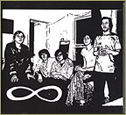 This disc, the first of two collaborative volumes, is the live studio seed of Hototogisu and Burning Star Core, and stands as tall as the best of their own work. Creating something beyond their usual repertoires, this five-tracker collaboration sees both acts oozing into one five-brained monster. These are not the usual furious black-outs or dolorous droning jeremiads of much underground collaboration.
This disc, the first of two collaborative volumes, is the live studio seed of Hototogisu and Burning Star Core, and stands as tall as the best of their own work. Creating something beyond their usual repertoires, this five-tracker collaboration sees both acts oozing into one five-brained monster. These are not the usual furious black-outs or dolorous droning jeremiads of much underground collaboration.
The lack of any over exertion of musical influence from either act seems to illustrate how extremely solicitous this duo and trio were of each other’s input. This trapped energy of this live studio recording (god save us from postal collaborations between bored pale laptoppers) audibly bounces between the players. Their lack of musical eggshell treading means that the record is neither a jagged glass soundclash nor a collection of disparate elements that refuses to gel. The glue of Volume One is the multi-tasking sounds of C. Spencer Yeh (Burning Star Core’s mainman) and Hair Police’s Trevor Tremaine, here playing as part of an expanded BxC with fellow policeman Robert Beatty. Tremaine’s percussion provides a bed for the players to leap from, a pacemaker (in both senses of the word) and a structure setting unspoken and unseen borders.
"One" is a good example of both act’s self-control, the drone roar relying more on the trickery and force of muscle and smoke than an overload of the senses. The stamp of the percussion seems to be gating the stretch of the snarling feedback, Hototogisu’s Matthew Bower and Marcia Bassett turning drone and vocal inwards instead of spilling rage across the track. The electronic splatter of "Three" has riverbed singing that’s pinpricked into bloody bawls amidst sand dune drones. Sounding like the fruit of neither act, it again appears to be Tremaine’s central and audibly obvious presence that’s driving this performance. His lone-man-in-a-factory clank and kick seems to thicken up the drones, turning them into a thick matt-paint drool.
From the evidence of this 18-minute five-track disc, this team-up is one that should be forced to get together weekly as an article of law; it totally works. The unstoppable elemental force of Bower and Bassett never sound like they’re gnawing at the structures to get loose and splurge ritual across everything. Saying this is a mellowing and focusing of both bands modus operandi is no insult. The beautiful interplay of "four" feels closest to the sound of Burning Star Core, the little melodic patterns evocative of the work of C. Spencer Yeh. Pulling half-formed blueprints from his violin and electronics his input is more noticeable on repeated visits.
Having been lucky enough to see Hair Police live, I think it’s safe to suggest that the slowly expanding bass line on "Two" is from one of Beatty’s handheld boxes. The drums are at their loosest here, almost sinking into the morass, despite syncing up with low end. This constructed aspect doesn’t just leave the others applying simple drones though; they wriggle and surge under tethers. Their part of the sound never slips into being innocuous; it still packs a hefty sting.
This quintet avoiding the current trend for falling into recurring explosions of collective noise, preferring to explore the territory rather than razing everything to the ground. This volume seems more like a Vulcan mindmeld than a jam session, and maybe the fruits of their union should’ve been tagged with a new amalgamated moniker. Volume Two has a lot to live up to.
samples:
Read More
- Scott Mckeating
- Albums and Singles
Listening to Heather Leigh records is like being abandoned in limbo-like badlands. Very few artists are making this sort of sound world visible, and none are doing it using only pedal steel, voice and harmonica. This Fag Tapes cassette picks up the passengers left stranded in the downpour of her Pot Baby album and takes them further in.
Heather Leigh’s voice would fit equally well in either the cathedral or the graveyard; her lullaby culling call is an instantly recognizable vocal. It’s possible to invest it with either malice or innocence, and this duality also applies to her pedal steel playing. At times it’s a crooked metal wave of weight, and seconds later an untouched feather drift of pastel sounds. The drones never obfuscating the instruments musical origins.
While Leigh’s vocal seems composed and focused, her febrile hand movements spew out the combination of iron and sunburn. She never prevaricates on Jailhouse Rock, and her improvisational choices are not fortuitous; she seems to know exactly where she’s going. Always ready to follow or ride the tones that agitate the air she births ugly/beautiful organically sourced sounds. Coming up with crabwise melodic patterns, her fingers push air into forming the thick treacly sounds of collapsing skylines, spiraling up and into itself. Picking out a steady pattern, like the playing of rubber bells, she stamps out seasick and high-end tones. Just before the twenty minute mark, a harmonica is played sounding like its come straight from the aftermath of the American civil war aftermath. The smoky remains of pedal steel remain like ringing cannon feedback in the ears.
On the second side of the tape there seems to be another voice in the mix aside from Heather’s. This dueling male sounding vocal may be her voice electronically altered or an uncredited partner in crime, but it works incredibly well against the higher notes. Heather Leigh’s music seems to be expanding by increments with every release. Now where’s my solo harmonica CD-R?
Read More
- Gary Suarez
- Albums and Singles
Admittedly, I have a bit of a love-hate relationship with Les Temps Modernes. Founder James Nice has an unshakeable blind passion for '80s proto-electronica, post-punk, and anything Factory Records ever considered releasing. What this translates to is a reissue program comprised of lost classics, adequate relics, and unearthed turds. Chicken Rhythms falls squarely into that middle category.
An argument has been made that Northside was the product of the esteemed Anthony Wilson trying to exploit the "Madchester" scene that groups like The Stones Roses and the label's very own Happy Mondays were bringing to musical heights or cultural lows, depending on who you ask. Based on these recordings, which includes the band's sole Factory album and a handful of bonus single tracks, it comes across as a forced fit. Despite the outright mimicry of the period's neo-psychedelic visual art on the cover, Northside's music rarely resembles any of these "baggy" groups or their immediate descendents enough to even warrant charging the members as opportunist copycats or bandwagon jumpers. I wonder if Northside might have had at least a little more longevity, or perhaps a shot at a proper crossover hit if they hadn't been branded so irresistably with this faddish scene.
"Shall We Take A Trip," their most notable single, only proferred the band a faint glimmer of success in their native U.K., largely due to and simultaneously in spite of a BBC ban of the tune over its drug-friendly lyrical content. While hardly as anthemic as that classic Mondays' hit "Hallelujah," this track as well as several other very enjoyable numbers like "Take 5" and "My Rising Star" will satiate casual and rabid collectors of '90s alternative music, to say nothing of the Factory completists who depend on LTM.
Read More
- Creaig Dunton
- Albums and Singles
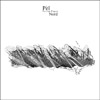
Using only the sound of manipulated AM radios, Fages creates washes of slow, seemingly unchanging studies of frigid sound. Not unlike the asceticism of Eleh, these deliberately static pieces require intensive listening to fully unravel.
"P" is the harsher of the pair here, drawing out a high pitched, painfully shrill electronic tone that immediately begins and never stops.A slight warbling appears, and subtle flickering and fluttering noises seem to arise due to the clipping of the admittedly loud mix.While it’s grating at times, the subtlety that can be heard is fascinating.
On the flip side, "N" works within the same realm of sustained, constant tones exhumed from AM radio waves, but the result isn’t as shrill and therefore not as tinnitus inducing.Instead, there is an underlying tension that doesn't relent:I always expected something else to happen, but the haunting, spectral sounds emit only the most minuscule of changes.There is a slight climax with a dramatic swell-up at the end, but it doesn't reduce the tension at all.
Considering this 7" is a pair of sparse, often times painful, tones that barely change, it isn't the most pleasant record I've heard all year, but it excels conceptually and artistically.Shades of Eleh are here in the staunch minimalism and focus on sparse frequencies, but there feels like a little bit more of grime here, which adds to the variation that can be heard.
Read More
- Administrator
- Albums and Singles
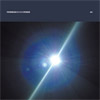
On his first true solo follow-up to 2008's brilliant Black Sea, Christian Fennesz has once again presented a work of hazy, inviting brilliance. With the addition of percussion from Steven Hess on the title track, there’s an even greater sense of pop musicality shining through the more abstract moments.
Christian Fennesz' work is not limited by any form of technology, yet he is frequently and unfairly pigeonholed by outsiders as a "laptop artist," despite the frequent use of untreated guitar in his music.Even when he uses software and digital effects, the result is far more human and organic than he is credited for.
The opening "Liminal" and closing title track exemplify this best, both songs meshing the feeling of 1960s pop with modern avant garde instrumentation.The former launches immediately, mixing his plaintive guitar notes with waves of processed, but organic sound that is unidentifiable, yet inviting.He perfectly balances the dissonance of technology with warm, beautiful melodies.Crunchy fuzz layers and gentle rolling tones coexist in perfect harmony, and the entire piece possesses a living, breathing sound to it.
Ending the EP is the title track, which is a pastoral combination of field recordings and guitar, both electric and acoustic.Hess' drumming is perfectly understated: quiet enough to not disrupt the peaceful ambience, but present enough to give the song a sense of movement and propulsion.It has that perfect end of summer sound he has mastered: a mix of natural beauty with just a hint of nostalgia and melancholy.Fennesz has hinted that future work may go more in this direction, and I think it adds another layer of depth to his already complex oeuvre without upsetting the delicate balance.
Between these two songs there’s a bit more experimentation and variation on similar themes.The shimmering guitar and erratic buzzing of "July" still convey that Fennesz warmth, but is more abstract and collage-like, and also has an overall heavier, more monolithic sound to it.The longer "Shift" is more droning that I was expecting, considering the other songs here.Opening with gentle string-like waves of sound, the pieces slowly come into focus, enshrouded in warm, vintage static.Structurally it stays rather monochromatic, lacking the dramatic changes and development from the other pieces.It’s not quite as captivating as the other tracks on this 10", but a less-than-stellar Fennesz track usually rivals the best work of other artists.
Every piece of music I have heard from Fennesz has been fascinating, and this EP is no exception.I only wish there was more here:the sub-20 minute duration simply serves to tease for what will hopefully be an upcoming full length.Listening to this recently, at the end of August and early September, it perfectly captures that end of Summer vibe that works so well.Rarely are there artists this adventurous that I can turn to no matter what my mood is:it's never off-putting or distracting, which is rare.With a new collaboration with Ryuichi Sakamoto due at any time and hopefully a new full length, this 10" works as a great teaser.
samples:
 
Read More
- Administrator
- Albums and Singles

Landings is the culmination of nearly half a decade spent exploring and remapping Anglezarke, on the West Pennine Moors of northern England. Over the course of its pagesLandings interwines the artist's own narrative with that of the landscape - its topography, history and place-names.
This Third Edition significantly expands on the previously published text, adding new writing from 2009-2011 as well as further research into the toponymic and linguistic heritage of the landscape.
To celebrate its publication, a new 35-minute album has been produced which reworks Rapture - a pivotal recording from the second Landings album. All three albums in the Landings Seriesare now available together, as a high-quality, digital download:
{1} Carousell Landings (28th June, 2006)
{2} Richard Skelton Landings (28th June, 2009)
{3} Richard Skelton Rapture (28th June, 2011)
Each edition of Landings is individually signed by the artist and presented in a beautiful handmade cover, printed on high-quality Gerstaecker paper.
More information here.
Read More
- Administrator
- Albums and Singles
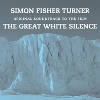
This massive double-album was pretty much a dream commission for Simon Fisher Turner: being asked by the British Film Institute to score the restored footage from Robert Falcon Scott's doomed 1910 expedition to the South Pole.  Given the demands and difficulties involved (soundtracking endless silent footage of cavorting penguins, for example), I'd say Simon's efforts were hugely successful in regards to verisimilitude, ingenuity, subtlety, and creating an appropriately haunted and desolate mood.  When taken as a stand-alone album with no visual context, however, the long lulls between flashes of beauty and interludes of bittersweet whimsy can be a bit wearying.
To state that Simon Fisher Turner has had an interesting career trajectory would be a bit of an understatement, as he has been a child actor, a teen pop artist, a member of The The, and one of the two comic geniuses behind the enigmatic Deux Filles.  He is most well-known, however, for his work as a soundtrack composer, having scored Loaded as well as some some films involving music-savvy folks like Derek Jarman and David Lynch.  Scoring The Great White Silence would have been daunting for anyone though.  Even the BFI's restoration of the film was nightmarishly complicated, as it had to be painstakingly pieced together from Herbert Ponting's negatives and his notes rather than an existing print.  That turned out to be ominous foreshadowing for Turner's own Herculean challenge (he actually described the experience as "terrifying"): composing a compelling score for two hours of black and white silent footage of ice, penguins, and men that were about to die slowly and miserably.  The task was further complicated by the fact that the film is a fairly high-profile and historically important work and that the music had to add drama and mood to Ponting's material without ever overpowering it.
The BFI's Jane Giles summarized Turner's quandary perfectly as "the score is really important to how to sell a two-hour non-fiction film where there's a lot of penguins and a lot of ice and not much drama."  Ponting's footage wasn't intended as a feature film documenting the end of one of England's greatest explorers– it was commissioned for a series of newsreels to sate the public's thirst for constant updates regarding the expedition and for adorable footage of penguins, which no one in England had seen before.  He didn't even attempt to weave it into a film until ten years later.  Consequently, it has some shortcomings regarding its narrative arc.  Naturally, the ultimate outcome of the voyage retroactively adds gravity, but Turner still had to make it all seem appropriately gripping without transforming Scott's final days into a music video for a Simon Fisher Turner ambient piece.
Rather than launching right into constructing the composition, Turner instead devoted quite a bit of effort to searching out sounds that had strong connections to the footage.  Appropriately, there is quite a bit of silence here, but it is meaningful silence.  Chris Watson had actually made some recordings in the hut where Captain Scott died (for an unrelated project) and helpfully offered them to Turner.  More overtly, Simon also employed what he calls "fake Foley effects" to match the actions taking place on the screen, like faking wind noises by dragging a microphone along a satin curtain.  Additionally, he had excellent luck acquiring quite a few other thematically appropriate sounds, recording the still-intact bell from Scott's ship, locating some contemporaneous gramophone recordings, and sleuthing out the hymn used to close Scott's memorial service.  Once all these elements fell into place, Simon's anxiety subsided a bit and everything started to cohere into a workable shape and trajectory.
The core of the soundtrack is built upon very slow-moving and minimal ambient drone that generally stays fairly austere and melancholy in tone.  Some of it is a bit bland, but I like most of it–in fact, some of it is incredibly beautiful.  The synthesizer parts rarely get the chance to stick around long enough to fully engulf me though, presumably because penguins, precocious cats, and dancing seamen keep appearing on the screen to necessitate a mood shift.  Fortunately, the resultant interludes are exactly what makes this piece so unique and fascinating.  In fact, the scratchy gramophone recordings of a female classical vocalist and the nakedly unprocessed closing hymn are among the most poignant and stunning moments of the entire album.  Though the "found" snippets of music tend to frequently steal the show, they wouldn't work if Turner hadn't done such an amazing job flowing seamlessly between relatively disparate moods (from "banjo hoedown" to "otherworldly, pitch-shifting ambiance," for example).  For all its digressions, the piece never loses the feel of an unfolding whole.  Simon also does an excellent job breaking up his sprawling opus with intelligent textural juxtapositions, cutting through his electronic reverie with sharp strings, scratchy old 78s, swooping theremins, and well-placed field recordings.
As a soundtrack, The Great White Silence probably exceeded everyone's highest expectations, as it manages to be sublime and deeply emotionally resonant without ever becoming too forceful.  In fact, it may very well be a masterpiece, though I won't know for certain until the film gets a US release.  As a decontextualized album, it is a bit flawed solely because it has been removed from its intended purpose as part of a larger whole.  There are a number of passages that I absolutely love, but they slowly trickle out over a period of nearly two hours, which makes this a tough album to listen to in its entirety.  This would be a lot easier to fully embrace if I could isolate individual stretches, but am sure chopping the soundtrack into smaller pieces would have wrecked the flow and synchronicity.  Turner had to choose between making a great Simon Fisher Turner album and making great soundtrack and he chose the latter, but he certainly came admirably close to nailing both.
Samples:
 
 
Read More
- Administrator
- Albums and Singles
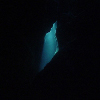
This is Alec Koone's full-length debut and it is a feverishly anticipated one in many circles, as his 2010 EP (See Birds) boasted some pretty spectacular moments.  Wander/Wonder thankfully keeps most of elements that I love about Balam Acab's languorous, spectral soul intact, but takes a large leap forward in sophistication and ambitionl– in fact, quite a few people are already hailing it as one the year's best albums.  There are a couple of things that keep me from making that claim myself, but there is no denying that Koone is a goddamn wizard at what he does.
See Birds was the first physical release on Tri-Angle, the label run by 20 Jazz Funk Greats' Robin Carolan, marking the beginning of a very distinctive and wildly successful aesthetic: sexy and damaged-sounding slow-motion soul.  In fact, one of Koone's songs even wound up in a L'Oreal commercial starring Beyoncé– a truly surreal and improbable feat for a teenager on an underground label.
In a broad sense, Koone's work shares quite a bit of common ground with his labelmates oOoOO and Holy Other, as his songs are crafted from chopped-up and pitch-shifted vocal hooks and simple, languid beats.  Balam Acab has a much more boldly experimental streak than the rest of the Tri-Angle roster though.  For example, despite all of See Bird's sultry beats and beautifully fragile hooks, Koone never let a song go by without something warped or ingeniously anachronistic threatening to drag it all forcibly into far weirder, more abstract territory.  Such tactics would have been jarring and self-defeating in lesser hands, but Koone somehow always knew exactly how far he could push things without losing control.  In many ways, Wander/Wonder takes these skewed tendencies much further.  Unfortunately, Balam Acab lost some of its sharper textural edges in the process.
To put it bluntly: Koone is a bit water-obsessed.  Most of these eight songs feature very prominent burbling, gurgling, and dripping water sounds and absolutely everything sounds either submerged or amniotic (so much so that The Wire wryly described Koone's new direction as "womb-hop").  For example, the dripping and rippling sounds in "Fragile Hope" are so loud that they grab as much focus as the actual music.  This curious artistic decision is a mixed success, as it makes the entire album feel like a coherent, thematically linked suite and adds greatly to the dreamlike, post-coital feel of the music, but it is also a bit over-the-top and hackneyed.  Another curious quirk here is that Alec loves to pitch-shift vocals upwards to make them sound angelic or childlike (most of his peers go the other direction, opting to slow down and stretch vocals eerily).  I will grudgingly concede that the "sexy chipmunk" vocals succeed in making the songs feel endearingly innocent and vulnerable, but Koone comes uncomfortable close to sounding precious on several occasions.
In theory, this is exactly the sort of album that I would normally loathe: it relies very heavily on a hugely overused motif (water), lacks the grittier and more exotic touches of its predecessor, has some beats that fix it very much at this specific point in time, and is very intent on sounding "pretty."  Yet despite all those damning characteristics, I still find Wander/Wander extremely absorbing and likeable– Koone is simply that absurdly good at what he does. For all its comparative toothlessness, it is absolutely teeming with haunting vocal hooks and multiple layers of textured and hallucinatory strangeness in the periphery.  I was also struck by the sheer nakedness and simplicity of the melodies, as some pieces are little more than a single ghostly, melancholy voice amidst some hissing, crackling, and rippling, but they nevertheless manage to hold my attention completely.  It is not a stunning epiphany to say that strong motifs can stand on their own and don't need any added density to prop them up, but it is extremely rare for a "pop" album to be this daringly spare.
Finally, Alec is pretty ballsy in both avoiding the successful formula that put him on the map and in circumventing normal song structure.  He has essentially gone from writing nothing but potential singles to writing almost no potential singles at all.  There are a few grooves and beats here and there, but the bulk of the album drifts along with a dream-like logic, its melodies seamlessly emerging from or sinking into gently burbling pools of field recorded ambiance.  If Koone ever gets any softer than this, I am definitely out, but for now I am very much an admirer.  There are certainly some dubious individual moments strewn throughout this album, but they are all ultimately in service of a beguilingly warm and inspired whole.
Samples:
 
 
Read More
- Administrator
- Albums and Singles

Jefre Cantu-Ledesma's Love Is A Stream was one of my favorite albums from last year, but somehow the fact that his Tarentel bandmate released a great solo album of his own slipped completely under my radar.  Curiously, the two albums could not be more different, as Grady almost completely eschews any hints of the languid post-rock experimentalism of his main gig in favor of more traditional acoustic fare informed by both West African kora music and Eastern-tinged acoustic guitar titans from the '70s folk scene.  Some of it sounds a bit too familiar to make much of an impact on me, but the album's high points are impressive enough to easily eclipse such moments.
Instrumental acoustic guitar albums have always been very difficult for me to connect with on any kind of deep level.  I can certainly appreciate their composition and complexity, but it is pretty rare for me to truly love an acoustic guitar piece.  Grody, to his credit, has managed to bridge the vast gulf between aesthetic appreciation and emotional resonance in at least one case here, "Four Years."  There is no mystery or radical twist to the song, just a great melancholy chord progression combined with a simple, clear, and lushly melodic motif.  Grody simply gets everything exactly right: the harmonies, the pacing, the string scrapes, the texture, etc.  It is an absolutely perfect piece, but it is not an anomaly.  In fact, the languid and beautifully unhurried "Well Wisher" comes close to reaching similar heights, but ends far too soon to accumulate the necessary depth and momentum.  The spare and intimate "Hunted/Haunted" also comes quite close to replicating the magic, unfolding a beautiful progression of minor key arpeggios over a bed of tape hiss.  Curiously, that is the only piece that openly betrays the home-recorded origin of this album.  Too bad– I love tape hiss in this context.
As gifted as Grody is as a steel guitarist, most of Fountain's greatest moments come when he expands his palette a bit to allow room for organs, feedback, and studio-tweaking.  The title piece, for example, benefits greatly from its warm electronic haze and sublime organ accompaniment.  The gentle organ and plucked harmonic reverie "Night Blooms" is also quite beautiful, as is the glistening ambiance of "Covered Mirrors," the one instance where Danny seems to set his acoustic guitar aside entirely.  The album's mesmerizing closer ("Finding Time") again treads quite similar territory, but with stuttering and gently cascading harmonics obscured by its murky, shimmering drones.  For the most part, I think I prefer the more ambient/soundscape side of Danny's work ("Four Years" being an exception) , but the balance between drone works and guitar pieces works quite well here.  The variety suits the album beautiful.
I am actually a bit surprised by how much I like this album, as at least half of these songs are excellent.  In general, I am more drawn to work with a very distinctive or unique aesthetic than Grody exhibits here (though it is also nice when someone is just extremely good at what they do).  I don't mean to imply that Danny is derivative or lacking his own niche, but the more exotic and experimental aspects of his work (while present) are quite secondary to Fountain's success.  Sure, it is pretty neat that Danny artfully uses harmonics to mimic the chiming timbre of African harp music, but it is far more remarkable how intuitively skilled he is at crafting strong melodies and immersive soundscapes and how he avoids ruining his great ideas with clutter or overproduction.  He is simply very gifted at all of the traditional stuff that truly matters: intelligent arranging, compelling dynamics, great use of space, maintaining an unwaveringly "human" feel, etc. As a result, he has created a very warm, intimate, and organic album that has completely won me over.
Samples:
 
Read More
- Administrator
- Albums and Singles
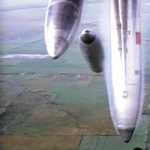 Fans and critics have uncontrollable tendencies to place far too many expectations on something they had no expectations of to begin with. Think back to the first time you heard this Canadian collective: there was something about that very moment which COMMANDED your attention whether you care to admit it or not, even if you like the band or not. The sound was fresh and warmly welcomed, grand and overwhelming at times. Transcending a number of genres, there was little room for comparisons or classifications. They achieved something which my friend, Jeremy, of Temporary Residence considers a mark of success: people started comparing -other- things to them. There was something more, however—something almost indescribable and intangible—which started out like a small mystery and has built to a frenzied, inescapable force-field which surrounds this simple instrumental rock group. Godspeed certainly could share the blame of setting the winds in motion—perhaps due to the choices of samples and the use of symbols and messages tucked inside artwork or projected on the stage screens. Couple these with a feverish, caustic and sensational media, aching for a soundbyte to exploit or an individual to single out, and things can easily spin out of control.
Fans and critics have uncontrollable tendencies to place far too many expectations on something they had no expectations of to begin with. Think back to the first time you heard this Canadian collective: there was something about that very moment which COMMANDED your attention whether you care to admit it or not, even if you like the band or not. The sound was fresh and warmly welcomed, grand and overwhelming at times. Transcending a number of genres, there was little room for comparisons or classifications. They achieved something which my friend, Jeremy, of Temporary Residence considers a mark of success: people started comparing -other- things to them. There was something more, however—something almost indescribable and intangible—which started out like a small mystery and has built to a frenzied, inescapable force-field which surrounds this simple instrumental rock group. Godspeed certainly could share the blame of setting the winds in motion—perhaps due to the choices of samples and the use of symbols and messages tucked inside artwork or projected on the stage screens. Couple these with a feverish, caustic and sensational media, aching for a soundbyte to exploit or an individual to single out, and things can easily spin out of control.
The band's fourth recording feels like their attempt to wrestle control back into their court. 'Yanqui' is a simple and pleasing instrumental rock record, as straight up as Godspeed can probably ever get—void of the musical gimmicks in which the band has become known for. The songs are once again lengthy, but noticably absent of the multiple-parts approach. The build up on each of the five tracks is simple but no less enjoyable than anything else they've done, whether it's with the droning strings on the second part of "09-15-00" or the quiet yet piercing bell-like opening of the first part of "Motherfucker=Redeemer." In addition, there are no speeches of the moral decline by senile old people or random Iron Maiden fans roaming the streets. Either they didn't want to go "mining for shit" through various tapes of field recordings or they're sick of people actually believing these bits are far more than instrumental coloration. The only extra-curricular additions are some pleasantly odd chords struck by wind instruments during the quiet moments of "Rockets Fall on Rocket Falls." For an album which is not meant to be their crossover or major breakthrough, I think the band has successfully conveyed, musicially, that they are simply a rock band, and don't want to be either saviors nor Satan's spawn.
 
samples:
 
Read More

